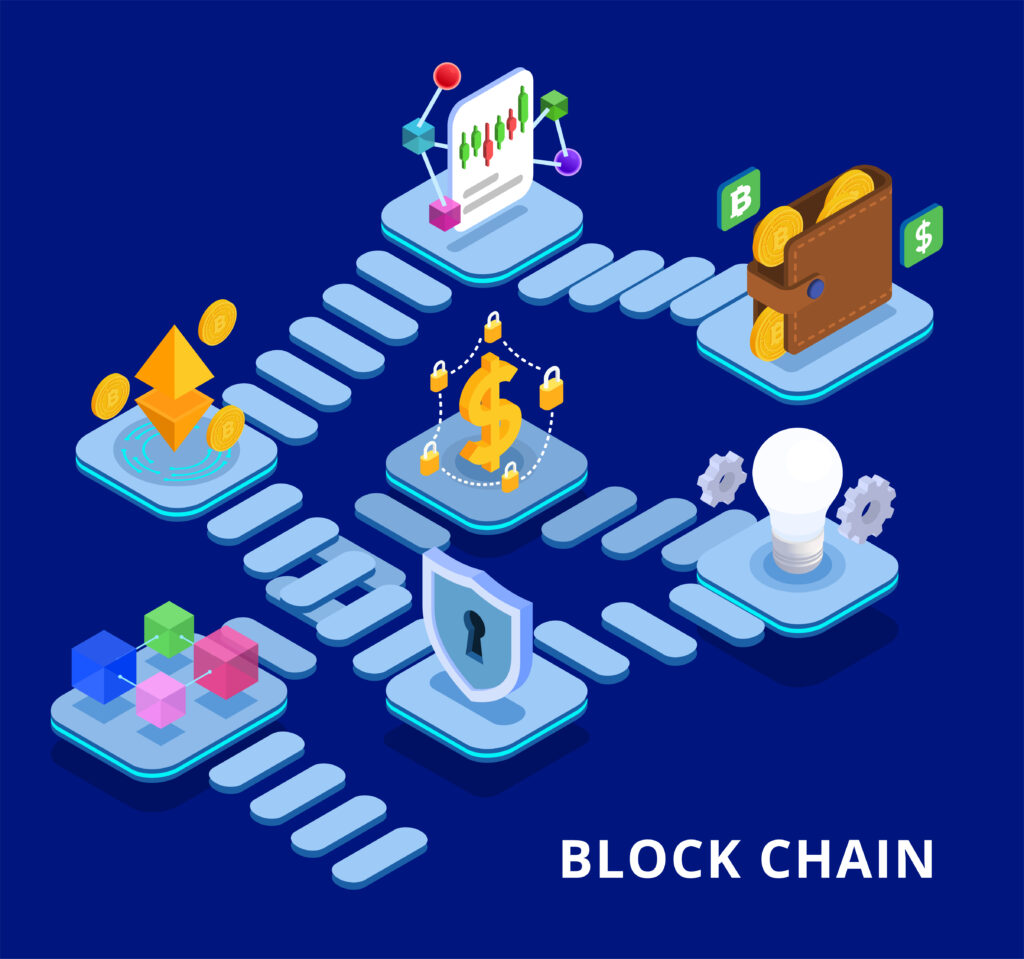Blockchain technology is more than just a buzzword; it’s a transformative force reshaping industries and economies worldwide. In this article, we’ll delve deep into the heart of blockchain, demystifying its workings and uncovering its potential. So, what is blockchain technology, and how does it work?
Table of Contents
- Introduction
- The Basics: What is Blockchain Technology?
- Understanding the Concept
- Key Features
- Use Cases
- How Does Blockchain Work?
- The Process
- Security Measures
- FAQs (Frequently Asked Questions)
- Conclusion
- Custom Message
The Basics: What is Blockchain Technology?
Understanding the Concept
Blockchain technology is a decentralized and distributed ledger system. Imagine it as a digital ledger that records transactions across multiple computers. These transactions, or “blocks,” are securely linked, forming a chain. Each block contains a set of data, and once added, it becomes part of a permanent, unchangeable record.
Key Features
Decentralization: Unlike traditional central systems, blockchain operates on a network of computers, making it immune to single-point failures.
Security: Blockchain uses advanced cryptography to ensure the integrity and confidentiality of data.
Transparency: Transactions on a blockchain are visible to all network participants, enhancing trust.
Data Integrity Assurance: Once information is logged onto the blockchain, it remains unchangeable, preserving the integrity of the data.
Blockchain technology finds applications in various sectors, from finance to healthcare and beyond. It’s the backbone of cryptocurrencies like Bitcoin and enables smart contracts, revolutionizing legal agreements.
How Does Blockchain Work?
The Process
Transaction Initiation: A user initiates a transaction, which includes sender, receiver, and transaction details.
Verification: The transaction is verified by network nodes using complex algorithms.
Consensus: Nodes agree on the transaction’s validity before adding it to a new block.
Block Addition: Once verified, the transaction is added to a block along with others.
Linking Blocks: Every new block includes a connection to the previous one, creating a sequential chain.
Mining: Miners solve complex mathematical puzzles to add the block to the blockchain.
Validation: The added block is validated by other nodes, ensuring its accuracy.
Security Measures
Blockchain employs cryptographic techniques to secure data. Each block contains a cryptographic hash of the previous block, making it nearly impossible to alter past transactions without altering all subsequent blocks.

FAQs
How is blockchain different from a traditional database?
Blockchain is decentralized and immutable, while traditional databases are centralized and can be altered. Blockchain enhances security and trust.
Is blockchain only used for cryptocurrencies?
No, blockchain has diverse applications, including supply chain management, voting systems, and healthcare records.
Can blockchain be hacked?
Blockchain’s decentralized nature makes it highly secure, but it’s not entirely immune to attacks. However, hacking a blockchain is exceptionally difficult due to its cryptographic safeguards.
How can I start using blockchain technology?
You can start by learning about blockchain and its applications. Numerous online courses and materials exist to assist you in beginning your journey.
What are smart contracts?
Smart contracts are contracts where the conditions are written directly into the code, allowing them to execute automatically when specific criteria are met.
Will blockchain technology replace traditional banking systems?
While blockchain disrupts the financial sector, it’s unlikely to replace traditional banking entirely. Instead, it will complement and enhance existing systems.
Conclusion
Blockchain technology is a revolutionary force that has the potential to reshape our world. Its decentralized nature, security features, and myriad applications make it a topic of great interest and innovation. Understanding what blockchain is and how it works is the first step towards harnessing its power for a brighter future.
Here are some additional tips and insights on “What is Blockchain Technology? How Does It Work?
Analogies Simplify Understanding: To explain blockchain to someone new, use simple analogies. For instance, compare it to a digital ledger that’s shared among multiple people, just like a Google Doc that everyone can access and edit.
Trust and Immutability: Emphasize the concept of trust and immutability. Unlike traditional systems where a central authority maintains trust, blockchain relies on mathematics and consensus mechanisms to ensure data integrity.
Cryptocurrencies as a Starting Point: When introducing blockchain, it’s often helpful to start with cryptocurrencies like Bitcoin. People are generally more familiar with these and can grasp the basic idea of a decentralized ledger through them.
Real-World Applications: Highlight real-world applications of blockchain beyond cryptocurrencies. Mention supply chain management, where blockchain can track the origin of products, or healthcare, where it can securely store patient records.
Security Measures: Explain the security measures in blockchain, such as cryptographic hashing and decentralization, to underscore its resilience against tampering and fraud.
Mining Process: If appropriate, delve a bit deeper into the mining process. You can draw parallels between miners and auditors who validate transactions and add them to the ledger.
Future Potential: Discuss the potential for blockchain technology to disrupt various industries. Mention examples like smart contracts in the legal field, reducing the need for intermediaries.
Open-Source Nature: Highlight that many blockchain projects are open source. This encourages collaboration and innovation within the blockchain community.
Risks and Challenges: Acknowledge that blockchain isn’t without its challenges, such as scalability issues and energy consumption in proof-of-work systems. This shows a balanced perspective.
Resources for Learning: Provide readers with resources and references where they can further explore blockchain technology, such as books, online courses, or reputable websites.
Stay Updated: Advise readers to stay updated on blockchain developments as the technology is continuously evolving. Encourage them to follow industry news and join relevant communities.
Practical Use Cases: Share practical examples of how blockchain can benefit individuals and businesses. For instance, it can simplify international money transfers or reduce fraud in the art market.
Environmental Considerations: Mention the environmental concerns associated with some blockchain networks, especially those using proof-of-work consensus. This can prompt readers to think critically about the technology’s impact.